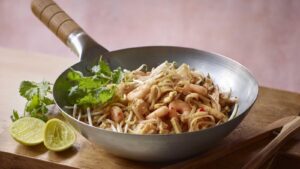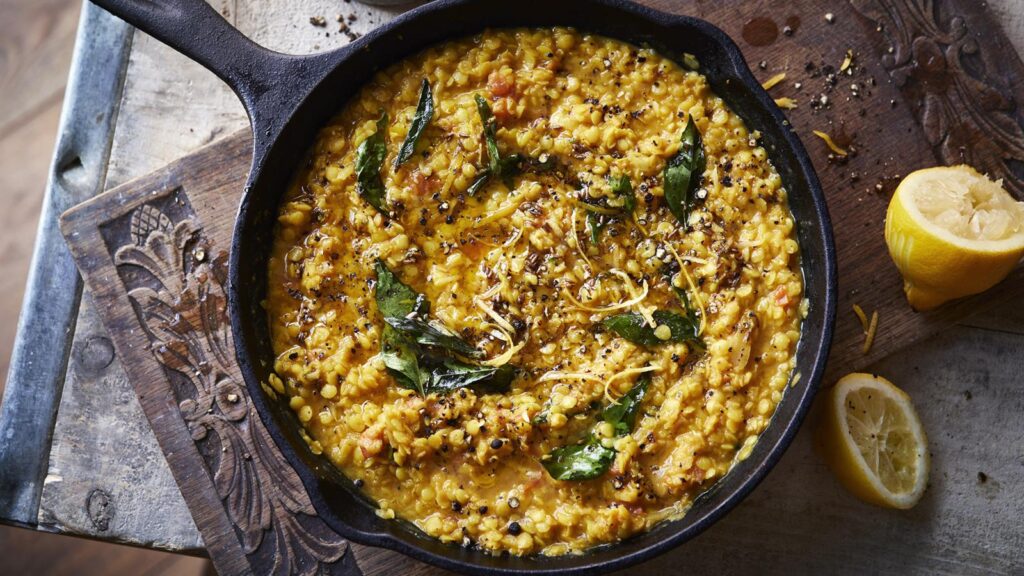History of Fish and Chips
Fish and chips, a quintessential British dish, emerged in the mid-19th century as a working-class staple. Its origins are tied to two key culinary traditions: fried fish from Sephardic Jewish immigrants and chipped potatoes (fries) from France or Belgium.
- Fried Fish: Jewish immigrants, particularly those fleeing persecution in Spain and Portugal, brought the tradition of frying fish in a light batter to England in the 16th and 17th centuries. By the 19th century, fried fish was a popular street food in London’s East End. A Jewish cook named Joseph Malin is often credited with opening the first fish and chip shop in London around 1860, though evidence is anecdotal.
- Chipped Potatoes: The concept of frying sliced potatoes likely came from France or Belgium, where “pommes frites” were already common. By the 1860s, chipped potatoes began appearing in England, sold by street vendors. The combination of fried fish and chips is thought to have solidified in northern England, with some claiming a chip shop in Lancashire, opened by John Lees in 1863, was among the first to sell the duo.
- Rise to Popularity: Fish and chips became a cheap, filling meal for industrial workers during the Industrial Revolution. The expansion of railways and trawler fishing made fish like cod and haddock affordable and widely available. By the early 20th century, “chippies” were a cultural institution, with over 35,000 shops at their peak in the 1920s. The dish was so vital to British morale during World War II that it was one of the few foods not rationed.
- Cultural Impact: Fish and chips evolved from street food to a national symbol, often wrapped in newspaper (a practice largely phased out for hygiene reasons by the 1980s). Regional variations exist, such as the use of haddock in northern England and cod in the south, or serving with mushy peas, curry sauce, or gravy.
Classic Fish and Chips Recipe
Ingredients (Serves 4):
- Fish:
- 4 white fish fillets (cod, haddock, or pollock), about 6 oz each
- 1 cup all-purpose flour (plus extra for dredging)
- 1 tsp baking powder
- 1 tsp salt
- 1/2 tsp black pepper
- 1 cup cold sparkling water or beer
- Vegetable oil (for frying)
- Chips:
- 4 large russet potatoes, peeled and cut into thick fries
- Vegetable oil (for frying)
- Salt, to taste
- To Serve:
- Malt vinegar
- Tartar sauce (optional)
- Mushy peas (optional)
Instructions:
- Prepare Chips:
- Soak potato fries in cold water for 30 minutes to remove starch, then pat dry.
- Heat oil in a deep fryer or large pot to 300°F (150°C). Blanch fries in batches for 5-7 minutes until soft but not browned. Drain and set aside.
- Increase oil temperature to 375°F (190°C). Fry chips again for 3-5 minutes until golden and crispy. Drain on paper towels and season with salt.
- Prepare Fish:
- In a bowl, whisk together flour, baking powder, salt, and pepper. Gradually add cold sparkling water or beer, stirring until smooth (batter should be thick but pourable).
- Pat fish fillets dry and lightly dredge in extra flour.
- Heat oil to 350°F (175°C). Dip each fillet in batter, letting excess drip off, and carefully lower into hot oil.
- Fry 5-7 minutes, turning occasionally, until golden and crispy. Drain on paper towels.
- Serve:
- Serve hot fish and chips with malt vinegar, tartar sauce, and mushy peas on the side, if desired.
Notes:
- Traditional fish and chips use fresh, sustainable white fish. Check for MSC-certified options.
- Beer batter adds crispiness and flavor; sparkling water is a non-alcoholic alternative.
- For authenticity, serve in paper cones or newspaper-style wrapping (use parchment for safety).
Latest posts by Paul (Poison Fish) Michael Woodman (see all)
- History of Pie and Mash - May 6, 2025
- History of Portuguese Food - May 6, 2025
- /recipes/Fish and Chips - May 6, 2025





